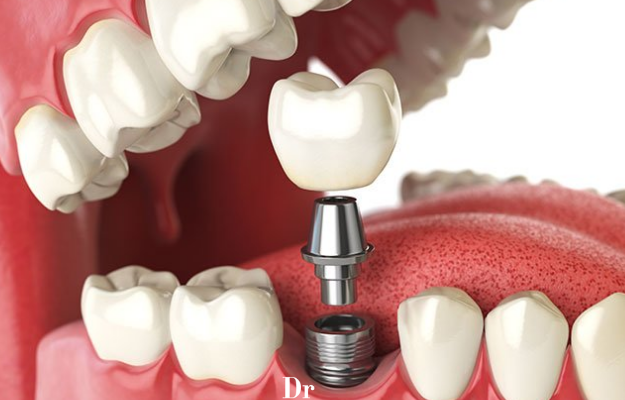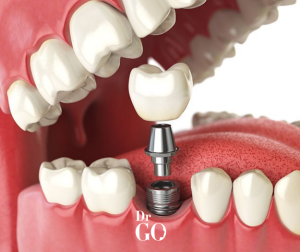
Pain After Dental Implant Screw Placement
Dental implants are one of the best cosmetic and dental solutions for missing teeth. Amount of dental implant screw pain has been installed in the jawbone after the dental implants screw (known as a titanium fixture) has been fitted into the gum line, many patients ask how much pain is normal and what sensation they will likely experience during recovery. Differentiating between typical postoperative sensations and indications of complication is important for a free recovery.
In this post, we will detail why you experience pain after getting implants, how long it should last for, what sort of discomfort is normal, and when you should visit your dentist if there are abnormalities. This guide is intended to leave you feeling more confident and aware about the healing process that comes after implant screw placement.
Why Does Pain Occur After Implant Screw Placement?
The dentist inserts a tooth root made of titanium into the patient’s jawbone to replace a natural tooth root during dental implant surgery. This process is performed using the bone and gum tissues, naturally resulting to a certain degree of swelling after performing this procedure.
It’s completely normal to experience pain at this stage for a number of reasons:
✅ 1. Gum Tissue Trauma
During the surgery, the gums are cut open and while it is a small incision, soft tissue requires healing time.
✅ 2. Bone Manipulation
Because the implant is placed into the jawbone, surrounding bone is put under stress and experiences small trauma – enough to cause slight to moderate pain.
✅ 3. Body’s Natural Healing Response
A bit of inflammation, swelling and tenderness is all part of the body’s way of protecting the surgery site and initiating some repair.
This is part of the pain that you would expect and with medication as well as some after care, it’s usually manageable.
How Long Does It Hurt After Dental Implant Surgery?
Every patient recovers at their own rate, but for the most part there is a fairly standard schedule:
Day 1–3: Peak Discomfort
- Mild to moderate pain
- Puffiness in the cheeks or gums
- Sensitivity when talking or chewing
- Possible minor bleeding
Now is when you would be feeling the most pain, but it should be tolerable.
Day 4–7: Noticeable Improvement
Pain begins to decrease significantly.
The swelling slowly recedes, and the business of everyday life becomes less black-and-white.
Week 2 and After
There is usually no or minimal pain in most patients at this point. There might be some tenderness to touch, but this is common.
After 1 Month
You should not experience pain.
Persistence or increase of pain at this point is not what we expect and deserves expert evaluation.
What is Normal Pain After Implant Surgery?
Normal postoperative pain is usually:
- Dull, throbbing discomfort
- Mild sharp sensations when chewing
- Sensitivity to touch in the area of implant and gum
- Sensitivity to pressure
This is discomfort and is usually managed by using over the counter medication or some medications that your dentist can dispense to you.
What Pain is not Normal?
Although they should be normal susceptible reactions to it, if you notice symptoms as some of those below is best you go and see your dentist.
❌ Severe discomfort that is worse after day 3
Pain should diminish — not increase.
❌ Throbbing or sharp pain that does not go away after 1 week
This may indicate an infection or irritation.
❌Painful bite weeks after surgery
Could indicate early implant instability.
❌ Swelling that gets worse rather than better
In other words, it doesn’t make you such that inflammation continues to get worse and worse.
❌ There is fever, bad taste or discharge around the implant site
These are an infections (peri-implant mucositis or peri-implantitis).
If any of these happen, you need to seek a dentist promptly.
Why is there Increased Postoperative Pain after the Implant Screw Insertion?
1. Infection
If the site is not cleaned well, or oral hygiene is lacking, bacteria may enter.
2. Implant Movement
Pain may increase if the implant becomes unstable (e.g., too early chewing forces).
3. Poor Bone Quality
Poor or inadequate bone may result in pain during osseointegration.
4. Sinus Complications
Upper jaw implants may interfere with the sinus cavity, if there’s insufficient bone support.
5. Nerve Irritation
On rare occasion, the implant may be near a nerve or bone and result in sharp, shooting pain.
How to Alleviate Pain Following Dental Implant Surgery
Most postoperative discomfort can be controlled with proper care. Dentists commonly recommend:
✅ Use prescribed pain medication
Take anti-inflammatory medication as directed.
✅ Apply cold compresses
Aids to blast reduce swelling in the first 48 hours.
✅ Stick to soft foods
Do not chew on the side of implant for atleast one week.
✅ Maintain proper oral hygiene
Gently brush the rest of your mouth and avoid the area of surgery for 24 hours, rinse with dentist-approved mouthwash.
✅ Avoid smoking and alcohol
Slow healing and infection risk are both heightened.
When to Call Your Dentist
You should contact your dentist immediately if you experience:
- Severer, increasing pain after the 3rd day
- Bleeding that doesn’t stop
- Discharge or odour from the implant site
- Persistent swelling or fever
- Pain that ends before returning again
- Difficulty opening your mouth
- Pain traveling to the ear, eye or neck
These signs may be a signal that there is a problem that needs to be addressed in order to save the implant.
Conclusion: “It Is Normal” to Have Pain After Placing an Implant Screw?
Yes — pain after dental implant screw placement is normal for the first few days and you should expect soreness. In the majority of patients, there is mild to moderate discomfort which slowly resolves.
But intense, long-lasting or increasing pain is not a normal part of the healing process and could mean that infection or implant movement has occurred.
With excellent aftercare, professional follow-ups and great oral hygiene the process of healing will be successful for your implant to heal strong in place and function as if it was a natural tooth.

